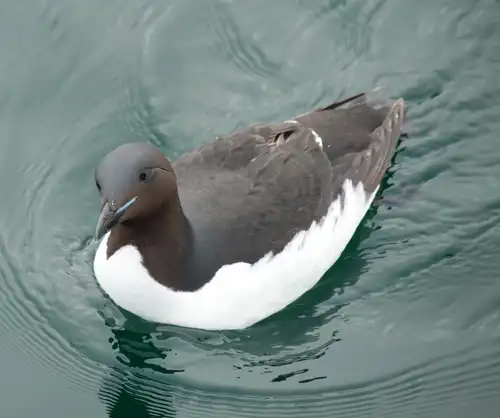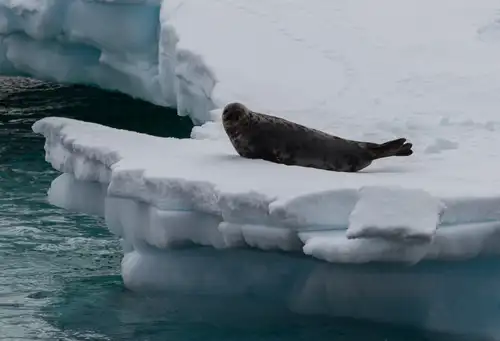

























 10 Days/9 Nights
10 Days/9 Nights







































































m/v Plancius
Our most longstanding vessel, Plancius, is a classic choice for many of our most popular polar voyages.

Specifications
| Passengers: | 108 passengers in 50 cabins |
| Staff & crew: | Crew 40 | Guides 8 | Doctor 1 |
| Length: | 89 meters (293 feet) |
| Breadth: | 14,5 meters (47 feet) |
| Draft: | 5 meters (16 feet) |
| Ice class: | 1D (Plancius has a Lloyds class notation 100A1 Passenger ship, Ice Class 1D at a draught of 5 meters) |
| Displacement: | 3211 tonnes |
| Propulsion: | 3x Diesel-Electric |
| Speed: | 10.5 knots average cruising speed |
Cabins Gallery


Ship Interior Gallery


Ship Exterior Gallery


M/v “Plancius” was built in 1976 as an oceanographic research vessel for the Royal Dutch Navy and was named “Hr. Ms. Tydeman”. The ship sailed for the Dutch Navy until June 2004 and was eventually purchased by the company. The vessel was completely rebuilt as a passenger vessel in 2009 and complies with the latest SOLAS-regulations (Safety Of Life At Sea). M/v “Plancius” is classed by Lloyd’s Register and flies the Dutch flag.
Perfect for any expedition
M/v “Plancius” accommodates 108 passengers with private toilets and shower in 4 quadruple porthole cabins, 9 twin porthole cabins, 25 twin cabins with windows and 2 twin deluxe cabins, all (ca. 12,5 square meters) and 10 twin superior cabins (ca. 21 square meters). All cabins offer lower berths (one queen-size bed in the superior cabins and two single beds in the twin cabins), except for the 4 quadruple cabins (for 4 persons in 2x upper and lower beds).
Plancius: a vessel with comfort and character
Please be aware that a small number of cabins may have a partially obstructed view due to the design requirements of the ship. The best view is always on the outer deck or the bridge. The vessel offers a restaurant/lecture room on deck 3 and a spacious observation lounge (with bar) on deck 5 with large windows, offering a full panorama view. M/v “Plancius” has large open deck spaces (with full walk-around possibilities on deck 4), giving excellent opportunities to enjoy the scenery and wildlife. She is furthermore equipped with 10 Mark V zodiacs, including 40 HP 4-stroke outboard engines and 2 gangways on the starboard side, guaranteeing a swift zodiac operation.
M/v “Plancius” is comfortable and nicely decorated, but is not a luxury vessel. Our voyages in the Arctic and Antarctic regions are primarily defined by an exploratory educational travel program, spending as much time ashore as possible. Plancius fully meets our demands to achieve this. The vessel is equipped with a diesel-electric propulsion system which reduces the noise and vibration of the vessel considerably. The 3 diesel engines generate 1.230 horsepower each, giving the vessel a speed of 10 - 12 knots. The vessel is ice-strengthened and was specially built for oceanographic voyages. M/v “Plancius” is manned by an international crew of 40 (20 nautical crew and 20 hotel crew), 8 expedition staff (1 expedition leader, 1 assistant expedition leader and 6 guides/lecturers), and 1 doctor.
Dress code
In keeping with our expedition atmosphere, dress on board is informal. Bring casual and comfortable clothing for all activities. Keep in mind that much of the spectacular scenery can be appreciated from deck, which can be slippery. Bring sturdy shoes with no-slip soles and make sure the parka is never far away in case of the call "Whales!" comes over the loudspeaker and you have to dash outside. Wear layers since it is comfortably warm aboard the ship - and often cold on deck.
Currency & payment
Refreshments from the bar and souvenirs will be charged to your cabin. The day before departure you can settle your bill with the Hotel Manager and pay by credit card (Visa or MasterCard) or cash (Euro or Dollar). We do not accept cheques of any kind. The price and standard currency on board our vessels is the Euro. Other currencies may be accepted at the discretion of the hotel manager at prevailing rates.
Electric current
The electrical supply aboard the ship is 220v, 60Hz. Electrical outlets are standard European with two thick round pins. You may need a 220v/110v converter.
Gratuities
The customary gratuity to the ship's service personnel is made as a blanket contribution at the end of the voyage which is divided among the crew. Tipping is a very personal matter and the amount you wish to give is at your discretion. As a generally accepted guideline, we suggest 8-15 Euro per person per day. It is better for the crew, if you can give them cash.
Non-smoking policy
On board our vessels we have a non-smoking policy. It is prohibited to smoke inside the ship. You can smoke in the designated smoking areas. Please respect the wishes of non-smokers.
Your physical condition
You must be in good general health and you should be able to walk several hours per day. The expedition is ship-based and physically not very demanding. Although we spend as much time as possible ashore, you are welcome to remain aboard the ship if you like. To join most excursions, you must be able to get up and down the steep gangway from the ship to the water level to board the Zodiacs. Staff will assist you in and out of the boats. This will become progressively easier with practice. Ashore it can be slippery and rocky. You are travelling in remote areas without access to sophisticated medical facilities, so you must not join this expedition if you have a life-threatening condition, or need daily medical treatment.
- An ice-strengthened ship is a ship made of steel. These ships are made to get through the ice at Antarctica and the Arctic. Nowadays, most of the ships that cruise to Antarctica and the Arctic are ice-strengthened ships. Ortelius and Plancius are both are ice-strengthened ships. Ortelius has the highest ice-class notation (UL1 equivalent to 1A) and is therefore very suitable to navigate in solid one-year sea ice and loose multi-year pack ice. Plancius has an ice-class notation of 1D. Icebreakers are needed if there is a trade route to keep ice free, if there are military reasons for patrolling in areas with heavy sea ice or if you need to work in heavy ice conditions, particularly in winter. Icebreakers are expensive to build and very expensive in fuel to run (sometimes powered by gas turbines or a nuclear generator). They are uncomfortable to travel in on the open sea.
- We have an international crew aboard our vessels. The primary language of our ships is English, but some voyages are bilingual. Though all of our staff speak English, other languages are common as well.
- When you make a confirmed reservation, we require a 40% deposit. But if the reservation is made within two months prior to departure, the full price of the voyage is due at the time of booking.
- No, you are not able to change currency on board.
- The sun sets for the last time in Spitsbergen in mid-September and rises above the horizon again in mid-February. The winter landscape and temperatures prevail until May.
- As polar bears can travel great distances in a day, it is impossible to say where and when we will spot them. Sea ice is the best place to look, so we tend to focus our efforts there. Though you will have a good chance of seeing polar bears in Svalbard, nature makes the decisions. Sightings cannot be guaranteed.
- There is place for 116 passengers aboard the Plancius. Furthermore there are 45 staff & crew on board : 17 nautical crew, 19 hotel staff (6 chefs, 1 hotel manager, 1 steward-barman and 11 stewards/cabin cleaners), 7 or 8 expedition staff and 1 doctor on board.
- There are in total 50 cabins at the Plancius: 4 quadruple cabins with private toilet and shower 9 twin porthole cabins 25 twin cabins with window 2 twin deluxe cabins (ca 15 square meters) 10 superior cabins (ca 21 square meters)
You May Also Like



Alpine Peaks of Spitsbergen, Ski & Sail
 8 Days / 7 Nights
8 Days / 7 Nights

Arctic Ocean - Fair Isle, Jan Mayen, Ice Edge, Spitsbergen, Birding
 10 Days / 9 Nights
10 Days / 9 Nights
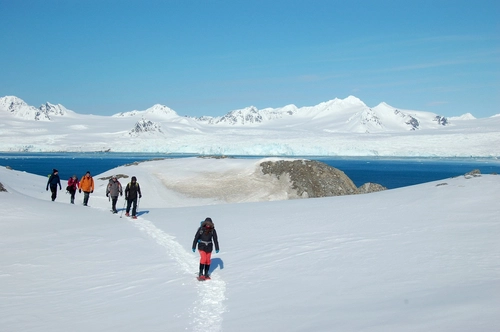
North Spitsbergen - Arctic Spring , Hike & Sail
 8 Days / 7 Nights
8 Days / 7 Nights

North Spitsbergen Explorer - Into the pack ice - Polar Bear Special
 8 Days / 7 Nights
8 Days / 7 Nights

Arctic Ocean - Jan Mayen, Ice edge, Spitsbergen, Birding
 9 Days / 8 Nights
9 Days / 8 Nights

Arctic Ocean - Fair Isle, Jan Mayen, Ice edge, Spitsbergen, Birding - Summer Solstice
 10 Days / 9 Nights
10 Days / 9 Nights

North Spitsbergen Explorer - Versatile landscapes, sea ice & wildlife
 8 Days / 7 Nights
8 Days / 7 Nights

North Spitsbergen Basecamp – Summer Solstice - Free Kayaking, Hiking, Photo Workshop, Diving (supplemented)
 8 Days / 7 Nights
8 Days / 7 Nights

North Spitsbergen Explorer - Versatile landscapes, sea ice & wildlife - Summer Solstice
 8 Days / 7 Nights
8 Days / 7 Nights

North Spitsbergen - Arctic Summer
 11 Days / 10 Nights
11 Days / 10 Nights

East Spitsbergen - Home of the Polar Bear, Including Long Hikes & Cleaning the Shores
 8 Days / 7 Nights
8 Days / 7 Nights

Around Spitsbergen, In the realm of Polar Bear & Ice
 10 Days / 9 Nights
10 Days / 9 Nights

North Spitsbergen Explorer – Into the Pack Ice – Polar Bear & Whale Special
 10 Days / 9 Nights
10 Days / 9 Nights

Northeast Greenland Solar Eclipse Explorer Voyage
 14 Days / 13 Nights
14 Days / 13 Nights

Spitsbergen - Northeast Greenland, Fly & Sail
 20 Days / 19 Nights
20 Days / 19 Nights

Around Spitsbergen incl. Nordaustlandet
 10 Days / 9 Nights
10 Days / 9 Nights

Alpine Peaks of Spitsbergen - Ski & Sail
 8 Days / 7 Nights
8 Days / 7 Nights

Arctic Ocean - Fair Isle, Jan Mayen, Ice Edge, Spitsbergen, Birding Special
 10 Days / 9 Nights
10 Days / 9 Nights

North Spitsbergen Explorer - Versatile Landscapes, Sea Ice & Wildlife
 8 Days / 7 Nights
8 Days / 7 Nights

North Spitsbergen Explorer - Into the Pack Ice - Polar Bear Special
 8 Days / 7 Nights
8 Days / 7 Nights

North Spitsbergen, Arctic Summer - Summer Solstice
 11 Days / 10 Nights
11 Days / 10 Nights

North Spitsbergen Explorer - Versatile Landscapes, Sea Ice & Wildlife - Summer Solstice
 8 Days / 7 Nights
8 Days / 7 Nights

North Spitsbergen Explorer - Into the Pack Ice - Polar Bear Special - Summer Solstice
 8 Days / 7 Nights
8 Days / 7 Nights

Arctic Ocean - Spitsbergen: Jan Mayen, Ice Edge & Birding - Summer Solstice
 9 Days / 8 Nights
9 Days / 8 Nights

North Spitsbergen Basecamp - Free kayaking, Hiking, Photo Workshop
 8 Days / 7 Nights
8 Days / 7 Nights

North Spitsbergen, Arctic Summer
 11 Days / 10 Nights
11 Days / 10 Nights

Around Spitsbergen, in the Icy Realm of the Polar Bear
 10 Days / 9 Nights
10 Days / 9 Nights

A Taste of North Spitsbergen - Compact Arctic Adventure
 6 Days / 5 Nights
6 Days / 5 Nights

South Spitsbergen Explorer - Bear Island - Diving (supplemented)
 10 Days / 9 Nights
10 Days / 9 Nights

Around Spitsbergen - Arctic Summer
 15 Days / 14 Nights
15 Days / 14 Nights

Around Spitsbergen and Nordaustlandet, In the Icy Realm of the Polar Bear
 10 Days / 9 Nights
10 Days / 9 Nights

Spitsbergen, Northeast Greenland & Scoresby Sund, Including Long Hikes
 14 Days / 13 Nights
14 Days / 13 Nights

South Spitsbergen, Bear Island & Mainland Norway - Aurora Borealis
 6 Days / 5 Nights
6 Days / 5 Nights

10 Tips for Photographing the Northern Lights

The Pack Ice and Polar Bears of North Spitsbergen

Arctic on Foot: Hiking and Snowshoeing the Far North

Polar bear feast

“The polar bear will still be there”

Around Spitsbergen vs. North Spitsbergen
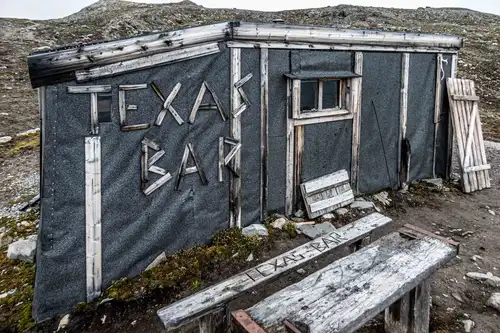
Svalbard’s Texas Bar

Eight Engaging Reindeer Facts

Svalbard vs. the Canadian Arctic

What’s so Special about East Spitsbergen?

The Northern Lights dancing across the skies

The Ins, Outs, and Ups of Polar Mountaineering & Ski Mountaineering

Polar Bears and Pack Ice: 22 Pics from North Spitsbergen

Polar bear encounter in Spitsbergen

8 Scientific Wonders of the Arctic

Arctic and Antarctic Basecamp Cruises – Choose Your Own Adventure

Arctic Foxes: Constant Gardeners of the Arctic
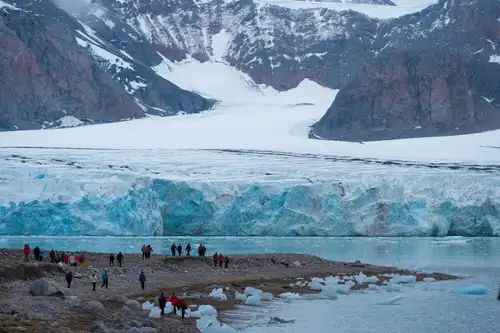
16 Conversation-Starting Svalbard Facts

The Arctic’s Most Phenomenal Fjords






































